Tobacco Types
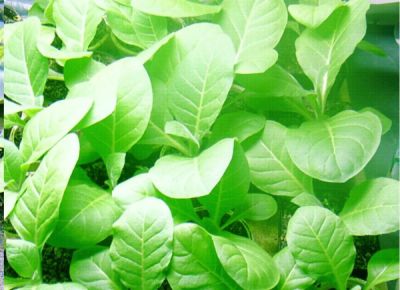
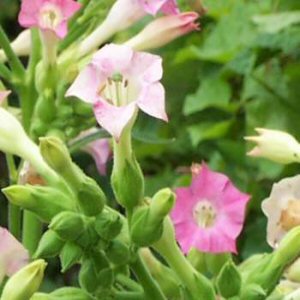
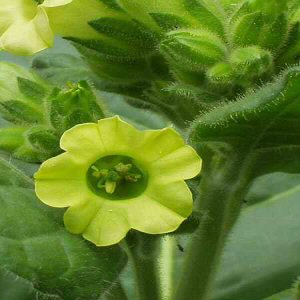
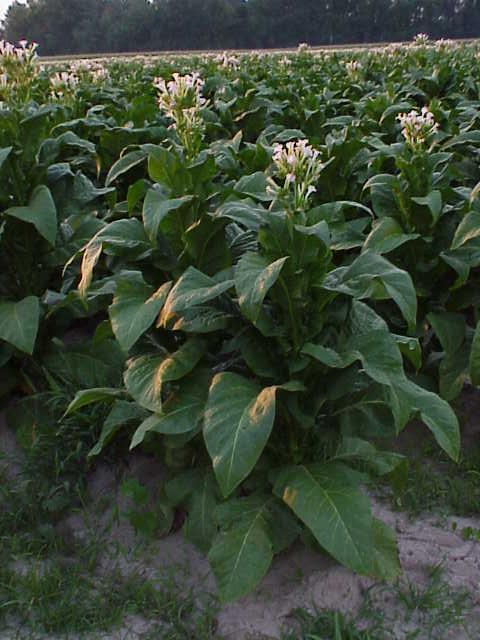
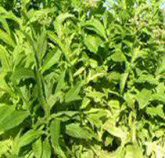
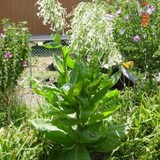
Virginia Tobacco Virginia in
bloom Native American Burley Turkish Monte Calm Brun
Oriental tobacco: A variety of tobaccos, grown in Turkey, the Balkans, and Russia. The best
known types are Izmir, Samsun, Yedidje, Cavella and Bursa. A common
characteristic is a dusty, dry and sometimes slightly sourish aroma. Some of
them are also used in "exotic" cigarettes from Egypt and other Arab
country's
Burley: Burley
and Virginia leaves are the same size, about 20-cm to 50 cm long, but their
properties and consistency differ. The colour of Burley tobacco ranges from
light brown to dark brown.Burley is the second main type of tobacco used for
pipe tobacco. It is known for having very low sugar content, and its leaves
often contain no natural sugar. Burley tobaccos have a robust aroma, burn
well in the pipe and carry a slight hint of cocoa in its taste; but it does
not have the sweet taste of Virginia tobaccos. Burley tobacco is harvested
when the leaves lose their suppleness, so the leaves are green when the
harvesting begins. The plants are harvested whole, and hung to dry in barns
sheltered from sunlight. No warm air is used, but the amount of fresh air
can be adjusted to achieve the perfect drying conditions. The normal drying
method used for Burley tobaccos is called air curing.
There are other methods of drying Burley tobacco, as used on the famous
Kentucky tobacco. After air curing, this Burley is then fire-cured. A fire
giving off a thick smoke is built in the barn, and the leaves absorb the
aromatics in the smoke. Kentucky tobacco comes originally from the American
state of the same name, but it is also cultivated in other parts of the
world, such as Malawi.
Virginia:
Virginia and Oriental tobacco belong to the same type, as they both have
high sugar and aromatic content. Virginia has a pH value of about 4.5, which
in chemical terms means sour. Burley has a pH value of about 7, or neutral.
These main types are broken down into various subtypes, which are described
below.
Throughout history Virginia tobacco has been highly valued, and today it is
the most widely used base tobacco in pipe tobacco mixtures. The popularity
of Virginia is owing to the high natural sugar and aromatic content in its
leaves. These natural ingredients give Virginia tobacco its sweet and
aromatic taste. The Virginia plant develops leaves 20 cm to 50 cm long.
Virginia tobacco is harvested in several stages, as the leaves are plucked
individually when they are ripe. The ripening takes place on the plant, and
the leaves are harvested when they take on a yellowish color.
After being picked, they are gathered in bundles (10-12 leaves per bundle)
and hung on rods in barns to dry.
Most Virginia tobacco is flue-cured (dried by warm air), which means that
the temperature during the five-day drying process slowly rises to about 80
degrees Celsius.
Flue curing is a precisely controlled drying process in which the relation
between temperature and air humidity draws out the natural qualities of
Virginia tobacco. The colour in flue-cured Virginia leaves range from light
yellow to mahogany.
Latakia: Latakia
is also a Virginia-type tobacco, and it comes originally from Syria. The
leaves grow close the ground, and when they are ripe, they are harvested
individually, hung on rods and dried by the sun-curing method. fterwards, Latakia is treated differently than other Virginia types: it is
also fire-cured (dried over an open fire).
The leaves are exposed to smoke from the fire and thus absorb aromatics from
the smoke. This is the quality that makes Latakia special. Latakia tobacco’s
taste can vary depending on the type of wood used to make the fire. Latakia
is also a tobacco we use only as seasoning, because it is very strong, spicy
and unpleasant to smoke in a pure form.
Havana:
Nicotiana tabacum L.
Havana is an attractive, productive plant that reaches about five
feet tall and produces pretty, pink, trumpet-shaped flowers.
There are many numbered varieties of Havana tobaccos.
Along with being an attractive ornamental annual, Havana is a variety that
is used for cigars and for chewing.
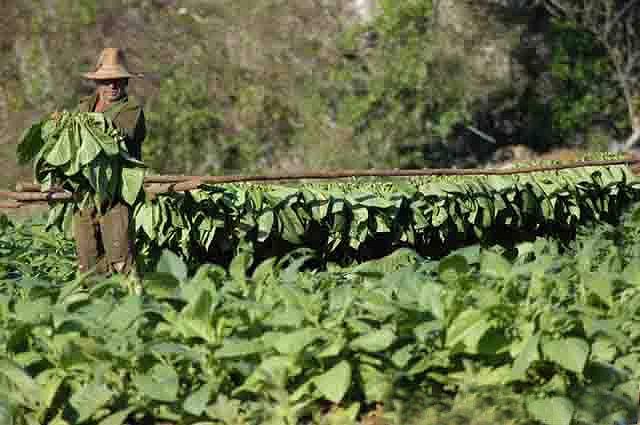 Harvesting
Tobacco: Tobacco is harvested in one of two ways. In the oldest
method the entire plant is harvested at once by cutting off the stalk at the
ground with a curved knife.
In the nineteenth century; bright tobacco began to be harvested by pulling
individual leaves off the stalk as they ripened, the leaves ripen from the
ground upwards, so tobacco may go through several "pullings" before the
tobacco is entirely harvested "Cropping" is the term for pulling leaves off
tobacco.The first crop at the very bottom of the stalks are called "sand
lugs" as they are often against the ground and are coated with dirt splashed
up when it rains.
Harvesting
Tobacco: Tobacco is harvested in one of two ways. In the oldest
method the entire plant is harvested at once by cutting off the stalk at the
ground with a curved knife.
In the nineteenth century; bright tobacco began to be harvested by pulling
individual leaves off the stalk as they ripened, the leaves ripen from the
ground upwards, so tobacco may go through several "pullings" before the
tobacco is entirely harvested "Cropping" is the term for pulling leaves off
tobacco.The first crop at the very bottom of the stalks are called "sand
lugs" as they are often against the ground and are coated with dirt splashed
up when it rains.
Curing
Tobacco farmers refer to the drying of the leaf as curing. It does not
involve any fermenting or sweating of the leaf. Sometimes this is referred
to as color curing.
 Sun-cured Tobacco
A comparatively small amount of tobacco is sun-cured. Leaves are
exposed to the sun to remove most of their moisture before being air-cured
to complete the process. Of all sun-cured tobaccos, the best known are the
so-called Oriental tobaccos of Turkey , Greece , Yugoslavia , and Balkans.
Oriental tobaccos are stored in bales and allowed to ferment. After storage,
moisture is added to this type of tobacco. Pure Turkish cigarettes contain
100% unblended Oriental tobacco or blended, Oriental tobacco is mostly used
in cigarettes, cigars, pipe, snuff or chewing tobacco.
Sun-cured Tobacco
A comparatively small amount of tobacco is sun-cured. Leaves are
exposed to the sun to remove most of their moisture before being air-cured
to complete the process. Of all sun-cured tobaccos, the best known are the
so-called Oriental tobaccos of Turkey , Greece , Yugoslavia , and Balkans.
Oriental tobaccos are stored in bales and allowed to ferment. After storage,
moisture is added to this type of tobacco. Pure Turkish cigarettes contain
100% unblended Oriental tobacco or blended, Oriental tobacco is mostly used
in cigarettes, cigars, pipe, snuff or chewing tobacco.
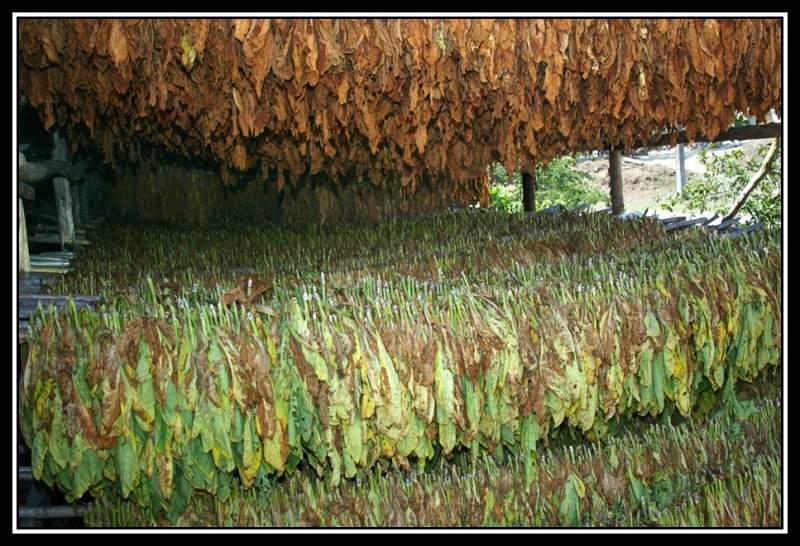
Air curing
This is simply drying (curing) the leaf by hanging it in the open air,
usually in a barn. It usually takes about two months. It produces a brown,
tan or red leaf with almost no sugars in it.
Fermenting also called
sweating, This is the process by which ammonia is released from the leaf to
make it sociable. It can be done by heaping the tobacco into large piles
called pylons that raise the temperature and humidity or by use of a kiln
with a heater and humidifier. Under the raised temperature and humidity
enzymes in the leaf cause it to ferment. It is not necessary to spray a
fermenting solution on the leaf as some suggest the enzymes will do it
naturally. Sometimes this is also referred to as curing.
This system of maturing leaf came from the days when tobacco was shipped by
sail. The ship would sit in port for a few weeks, very humid and bails
stacked tight together. When the tobacco reached it's destination it was
found to smell and taste sweeter. You could use the curing chamber for this
job after the initial curing, cut back the heat and humidity and close off
the flu but keep the small fan running.
Fermenting:
There are two methods of fermenting,
stacking and
kiln fermenting.
The stacking method is used by large
growers, stacks of tobacco weighing around 100 lbs are wrapped in burlap and
allowed to "sweat" the internal temp is closely
monitored and when it reaches 140 degrees the stack is broken down to
release tar, ammonia, and nicotine, the stack is torn down and rebuilt
several times until the temp will no longer reach 110 degrees, the stems are
stripped and stacked in a cooler place (65 degrees to age for a time 6 weeks
to 6 years).
Kiln fermenting: is what the smaller
grower must use if he or she wants to smoke any time soon, the kiln is a
small-insulated container with an artificial heat source that helps to
simulate the fermentation, the leaves are placed in the kiln with the
lid shut heat and humidity are carefully controlled (temp 100 to 130 degrees
and 65 to 70% humidity) the kiln is left on 24 hours a day, kiln fermenting
lasts about 4 to 6 weeks, the relative humidity must be carefully maintained
during this time, a short aging period will follow of 4 to 6 weeks or longer
until the leaves can either be rolled into cigars or cut for cigarette
pipe or chewing tobacco.
Free Plans for building your own Wooden Tobacco Curing
Kiln
Tobacco tips:
(1) If the leaf is too dry, lower the heat, too
wet raise the heat to max 130f. If still too wet lower the humidity.
(2) If the leaves are moist they will mold in
about two or three days. If you put a hygrometer in the chamber you will
find that at 70 percent relative humidity they will be very pliable but dry.
That is what you need
(3) The temperatures like 95 degrees F for one
month, 110-115 F digress for one to two months. Then if I want a darker leaf
120-125 F degrees for one or more months depending on the type of leaf. not
over 130 degrees F. the natural enzymes in the leaf causing the fermentation
may stop working. I put a thermometer and hygrometer combination inside.
They only cost a few dollars from a local home improvement store.
Aging:
Remember aging will always improve a tobacco, and any tobacco leaves can be
kiln cured if it has been properly stored (humidity no lower than 50% to
65%). Smoking uncured tobacco is unpleasant and dangerous as the nicotine
and ammonia contained can be fatally high, not to mention it will taste like
your smoking leaves from your front yard.
Humectants/Preservatives
Humectants: Humectants account for
approximately 3.76% of the weight of a roll-your-own cigarette. They are
used to ensure freshness of fine cut tobacco. Imperial’s brands of fine-cut
tobacco contain humectants that are often used in the making of prepared
foods: glycerin (2.74%), invert sugar and propylene glycol.
Preservatives: To prevent fine cut tobacco from getting moldy, a
preservative is used in the production process. Imperial Tobacco Canada uses
potassium sorbate, a preservative also used in the making of prepared
foods.
Potassium sorbate is used as a mold, bacterial and yeast inhibitor and as a
fungistatic agent in foods. It is also used in cosmetics, pharmaceutical,
tobacco and flavoring products. In wines, it is to prevent the secondary
fermentation of residual sugar.
Seedlings care:
I have always kept my seedlings covered in the propagator for the first
2 weeks to make sure they don't loose moisture to quickly. The soil almost
always gets some mold growing on it but it has never hurt the plants. The
plastic propagator lid will be covered with condensation on the inside. For
the first few weeks the seedlings don't have much of a root going down deep.
What they have are small probes going in all directions. You can see
them if you look real close. They look like thick white hairs. If those
roots dry out the plant die even if you have watered them. I look for roots
not leaf, the single strand root will not support a plant if there is a
sudden change in temperature. I keep the lid on the propagator for at least
4 weeks, by then there are multi strands of root and at least 6 leafs.
Around the 2nd or 3rd week I also raise up the lid of the propagator about
1/2 inch, so some of the moisture can escape.
Growing in Pots;
Even though Tobacco plants like a lot of space, they can be grown
successfully in pots. Use the largest size pot you can reasonably
accommodate, and give them plenty of rich compost. In pots they will require
regular watering during the hottest part of the Summer months, sometimes
daily, I have successfully grown in 5 Gal pots.
Nutrient imbalances in tobacco
Problems with tobacco
